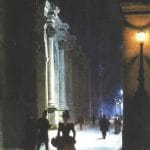
Is the Mona Lisa truly the pinnacle of artistic achievement, or is it just an overrated icon? This question has been at the forefront of art debates for decades. The painting’s global fame and the intrigue surrounding its subject make it a central piece in art discussions. In this article, we’ll delve into both sides of the argument to understand if the Mona Lisa deserves its legendary status.
The Mona Lisa, housed in the Louvre Museum in Paris, is arguably the most famous painting in the world. Its mysterious allure and the enigmatic smile of its subject have fascinated millions. But is this fame justified by its artistic merits alone? We’ll explore the historical context, artistic elements, and cultural impact to get a clearer picture.
The debate about the Mona Lisa often polarizes opinions. Some hail it as the epitome of Renaissance art, while others see it as overhyped. By examining various perspectives, we aim to uncover the truth behind the Mona Lisa’s reputation. Is it the ultimate masterpiece, or has history elevated it beyond its true value?
Join us on this journey as we scrutinize the Mona Lisa from different angles. We’ll consider its creation, techniques, cultural significance, and the arguments both for and against its esteemed status. By the end, you might find your own view of this iconic painting challenged or reaffirmed. Let’s dive in.
Historical Context
Leonardo da Vinci, the genius behind the Mona Lisa, was a master of many disciplines. Born in 1452, he was not only a painter but also a scientist, engineer, and inventor. His diverse interests and skills profoundly influenced his art. The Renaissance period, during which he lived, was marked by a revival of classical learning and an explosion of creativity in the arts.
The Mona Lisa was created between 1503 and 1506, commissioned by Francesco del Giocondo, a wealthy Florentine merchant. The painting is believed to be a portrait of his wife, Lisa Gherardini. Leonardo’s meticulous process and innovative techniques are evident in the work. He used a slow and deliberate approach, which was typical of his methodical style.
Renaissance art was characterized by a focus on realism, humanism, and the study of anatomy. Artists sought to capture the beauty and complexity of the human form. Leonardo’s studies in anatomy helped him achieve remarkable realism in his works. The Mona Lisa exemplifies these principles with its lifelike depiction and detailed features.
Understanding the historical context helps us appreciate the Mona Lisa’s significance. It was created during a time of great artistic achievement and innovation. Leonardo’s mastery of technique and his scientific approach to art set his work apart. This context is crucial in evaluating whether the Mona Lisa is truly a masterpiece or merely a product of its time.
Artistic Analysis
One of the most striking aspects of the Mona Lisa is its composition and technique. Leonardo employed sfumato, a technique that creates a soft transition between colors and tones. This results in the painting’s lifelike and almost ethereal quality. The soft edges and smooth blending of colors make the Mona Lisa appear more realistic.
The composition of the painting is also notable. The subject is seated in a relaxed pose, with her hands gently resting on her lap. The background features a dreamy, almost surreal landscape. This combination of a realistic portrait with an imaginative background adds to the painting’s mystique.
The subject’s expression is perhaps the most discussed feature of the Mona Lisa. Her smile is enigmatic and has been interpreted in countless ways. Some see it as a sign of contentment, while others perceive a hint of melancholy. This ambiguity engages viewers and invites them to ponder the emotions behind the smile.
Leonardo’s attention to detail is evident in every aspect of the painting. From the delicate folds of the fabric to the intricate patterns in the background, every element is meticulously crafted. The Mona Lisa’s lifelike quality and the depth of its details showcase Leonardo’s exceptional skill. These artistic qualities contribute to its reputation as a masterpiece.
The Mona Lisa’s Journey to Fame
Initially, the Mona Lisa was not as famous as it is today. It was known and appreciated among art connoisseurs but did not enjoy widespread fame. This began to change in the early 20th century. The pivotal moment came in 1911, when the painting was stolen from the Louvre.
The theft of the Mona Lisa created an international sensation. Newspapers around the world covered the story extensively. The painting’s disappearance and subsequent recovery two years later elevated its status. It transformed the Mona Lisa from a respected artwork into a global icon.
The media frenzy surrounding the theft played a significant role in the painting’s rise to fame. The public’s curiosity was piqued, and the mystery of the Mona Lisa deepened. People flocked to the Louvre to see the painting once it was returned. This surge in interest solidified the Mona Lisa’s position as a cultural phenomenon.
Today, the Mona Lisa is one of the most visited artworks in the world. Its fame continues to grow, fueled by its storied history and the ongoing fascination with its subject. The journey to fame has been a complex interplay of art, media, and public perception. This history is crucial in understanding why the Mona Lisa holds such a unique place in popular culture.
Arguments for the Mona Lisa as a Masterpiece
Leonardo’s use of innovative techniques is a strong argument for the Mona Lisa’s status as a masterpiece. The sfumato technique, for instance, was revolutionary. It allowed for a more realistic representation of light and shadow. This innovation alone set the Mona Lisa apart from other portraits of its time.
The cultural impact of the Mona Lisa is another point in its favor. It has influenced countless artists and continues to inspire modern works. Its presence in art history is undeniable, serving as a benchmark for portrait painting. The painting’s ability to inspire and provoke thought is a testament to its enduring value.
The Mona Lisa’s appeal has not waned over the centuries. It continues to captivate audiences with its mysterious charm. The enigmatic expression and lifelike quality invite viewers to engage with the painting on a deeper level. This lasting appeal is a hallmark of a true masterpiece.
Moreover, the Mona Lisa’s emotional and psychological impact on viewers cannot be overstated. It evokes a wide range of interpretations and feelings. This ability to connect with people on a personal level adds to its greatness. These factors collectively argue for the Mona Lisa’s deserved status as a masterpiece.
Arguments for the Mona Lisa as Overrated
Despite its fame, some critics argue that the Mona Lisa is overrated. They compare it with other Renaissance masterpieces and find it lacking. Works by artists like Michelangelo and Raphael are often cited as superior. These comparisons challenge the notion that the Mona Lisa is the pinnacle of artistic achievement.
The role of media and marketing in the Mona Lisa’s fame cannot be ignored. The 1911 theft and subsequent media coverage played a significant role in its rise to prominence. Some argue that its legendary status is more a product of historical events than intrinsic artistic value. This perspective questions whether the painting would be as famous without the hype.
Art critics who consider the Mona Lisa overrated often point to specific aspects. They argue that the painting’s composition and technique, while excellent, are not unparalleled. Other artworks from the same period exhibit similar or greater skill. This critique suggests that the Mona Lisa’s fame might be disproportionate to its artistic merits.
Furthermore, the commercialization of the Mona Lisa has influenced its perception. It appears on countless merchandise items, from posters to coffee mugs. This ubiquity can diminish its value as a unique piece of art. These arguments collectively present a case for the Mona Lisa being an overrated icon rather than an unmatched masterpiece.
Cultural Phenomenon and Public Perception
The Mona Lisa’s status as a cultural phenomenon is undeniable. It draws millions of visitors to the Louvre each year. The museum capitalizes on its fame, using the painting as a major attraction. This tourism boom underscores the painting’s importance in popular culture.
Pop culture references to the Mona Lisa abound. It has appeared in movies, literature, and even music. These references perpetuate its iconic status and keep it relevant in contemporary culture. The painting’s integration into various media underscores its pervasive influence.
Merchandising and commercialization have also played a significant role. The Mona Lisa’s image is used in numerous products, from apparel to home décor. This widespread use in commercial contexts has both positive and negative effects. It keeps the painting in the public eye but can also cheapen its artistic value.
Public perception of the Mona Lisa is shaped by these cultural forces. People recognize it as a symbol of high art and mystery. However, the constant exposure can lead to a sense of overfamiliarity. Balancing its cultural significance with its artistic value is a complex challenge that continues to evolve.
Conclusion
In summary, the Mona Lisa’s reputation as a masterpiece is supported by its innovative techniques, cultural impact, and enduring appeal. Leonardo da Vinci’s exceptional skill and the painting’s emotional depth make it a standout work. However, arguments about its overrated status highlight the influence of media, historical events, and commercialization. This dual perspective allows us to appreciate the Mona Lisa in a nuanced way.
Reflecting on the Mona Lisa’s status invites personal contemplation. Each viewer’s experience with the painting can vary, adding to its rich tapestry of interpretations. Whether you see it as the ultimate masterpiece or an overhyped icon, the Mona Lisa undeniably holds a special place in art history. Its ability to provoke thought and evoke emotion is a testament to its enduring legacy.
Ultimately, the debate about the Mona Lisa’s status will likely continue. It challenges us to consider what makes art truly great. Is it the technical skill, the historical context, the emotional impact, or a combination of all these factors? This question remains open, inviting ongoing exploration and discussion.
As you ponder the Mona Lisa’s place in the art world, consider your own perspective. How does the painting resonate with you personally? Share your thoughts and join the conversation. The Mona Lisa’s story is as much about its viewers as it is about the painting itself.




